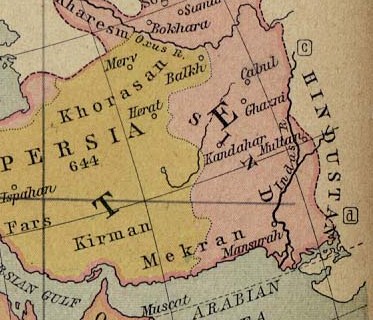Fișier:Ancient Khorasan highlighted.jpg
Ancient_Khorasan_highlighted.jpg (373 × 320 pixeli, mărime fișier: 58 KB, tip MIME: image/jpeg)
Istoricul fișierului
Apăsați pe Data și ora pentru a vedea versiunea trimisă atunci.
| Data și ora | Miniatură | Dimensiuni | Utilizator | Comentariu | |
|---|---|---|---|---|---|
| actuală | 22 octombrie 2010 22:07 |  | 373x320 (58 KB) | Officer | {{Information |Description= |Source= |Date= |Author= |Permission= |other_versions= }} |
Utilizarea fișierului
Următoarele pagini conțin această imagine:
Utilizarea globală a fișierului
Următoarele alte proiecte wiki folosesc acest fișier:
- Utilizare la an.wikipedia.org
- Utilizare la ar.wikipedia.org
- Utilizare la arz.wikipedia.org
- Utilizare la azb.wikipedia.org
- Utilizare la ba.wikipedia.org
- Utilizare la bn.wikipedia.org
- Utilizare la ca.wikipedia.org
- Utilizare la ckb.wikipedia.org
- Utilizare la de.wikipedia.org
- Utilizare la el.wikipedia.org
- Utilizare la en.wikipedia.org
- Muslim conquests of Afghanistan
- History of Afghanistan
- Kabul
- Al-Mansur
- Muslim conquest of Persia
- Greater Khorasan
- Jewish mythology
- History of Arabs in Afghanistan
- Portal:Afghanistan
- Delhi–Multan road
- Talk:Afghanistan/Archive 8
- Siege of Kabul (1504)
- User:Tisquesusa/sandbox9
- User:Falcaorib
- User:Northamerica1000/Portals of the world
- User:HistoryofIran/Greater Khorasan
- List of sieges of Kabul
- Utilizare la en.wiktionary.org
- Utilizare la eo.wikipedia.org
- Utilizare la es.wikipedia.org
- Utilizare la fa.wikipedia.org
Vizualizați utilizările globale ale acestui fișier.
